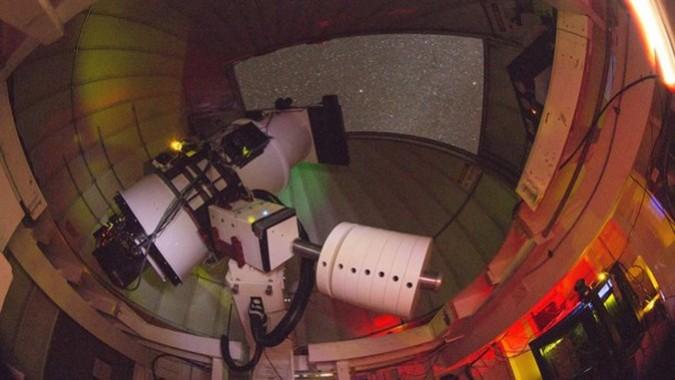
The University of Hawaii's Asteroid Terrestrial-impact Last Alert System (ATLAS) telescope, on Thursday, spotted Elon Musk's red Tesla Roadster which was launched into space aboard SpaceX's Falcon Heavy, the world's most powerful rocket.
ATLAS, which is an asteroid impact early warning system being developed by the UH Institute for Astronomy (IfA), consists of two telescopes, 100 miles apart, that track moving objects by automatically scanning the whole sky several times every night.
The ATLAS telescope spotted the Tesla Roadster in flight during its routine observations. The telescope automatically identified the sports car as a near-Earth object.
"We were lucky to catch the Roadster before sunrise during our regular observing. This really demonstrates the power of our system to find small objects that could hit Earth, and accurately measure their orbits to see if they're dangerous," said Larry Denneau, IfA's principal investigator for the ATLAS project, said in a statement.

ATLAS' orbit determination software pinned down the Tesla Roadster's orbit from four separate observations. It measured the car to be about 0.005 astronomical units (about 500,000 miles) from Earth, speeding away at about 3.6 kilometers per second (8,000 mph).
Although the ATLAS system is designed to hunt for objects coming towards the Earth, this time investigators found something going away from the planet.
"As a fan of what SpaceX is doing, it is fun to be a part of advances in science," Denneau said.
Falcon Heavy, which was lifted off from the same launch pad that NASA used for the Apollo 11 mission, has the capacity to lift nearly 64 metric tons into space. That weight is greater than that of a 737 jetliner loaded with passengers, crew, luggage, and fuel.
"Falcon Heavy was designed from the outset to carry humans into space and restores the possibility of flying missions with crew to the Moon or Mars," SpaceX said on its website.















